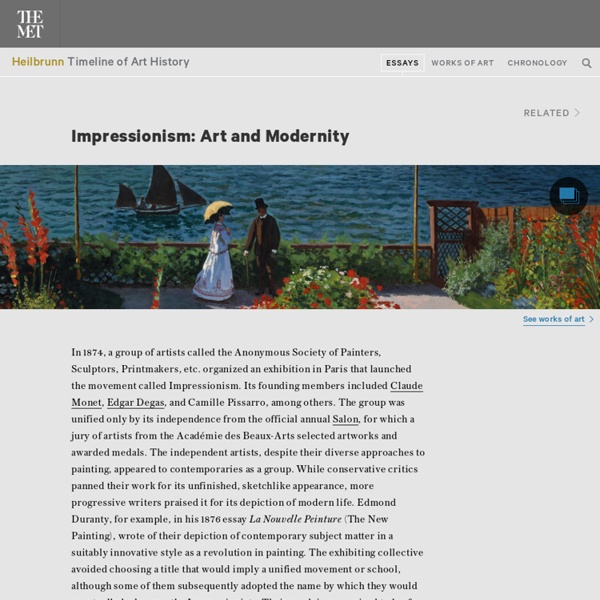



100 curators, 100 days on Saatchi Online Saatchi Online has launched a new initiative where 100 curators each select works by ten of the 60,000 artists exhibiting on the website, revealing their choices over the next 100 days... Saatchi Online launched in 2006 with the aim of providing exposure for artists without gallery representation, and as a means for them to sell their work (with Saatchi's taking a commission on each sale). To date the online gallery has over 60,000 artists on its site representing a wide range of disciplines and media. From this huge collection the curators have chosen ten pieces of work each, and each choice of ten will be revealed over the next three months. The curators themselves hail from all over the world and include Alessandro Vincentelli, Baltic Centre for Contemporary Art, Gateshead; Daria de Beauvais, Palais de Tokyo, Paris; John Zarobell, MoMA, San Francisco; Peter MacGill, Pace/MacGill Gallery, New York City; and Lara Boubnova, Director of the Institute of Contemporary Art, Sofia.
Guide to Impressionism | Paintings by Monet, Degas and Renoir The term 'Impressionist' was first used as an insult in response to an exhibition of new paintings in Paris in 1874. A diverse group of painters, rejected by the art establishment, defiantly set up their own exhibition. They included Monet, Renoir, Pissarro and Degas. What characterises Impressionism for most people nowadays, is both the subject matter and the technique. Today, the Impressionist paintings are some of the best-known and best-loved in the collection. Japonisme | Thematic Essay The Old Plum, Edo period (1615–1868), ca. 1645Kano Sansetsu (Japanese, ca. 1589–1651)Four sliding door panels (fusuma); ink, color, gold leaf on paper H. 68 3/4 in. (174.6 cm)The Harry G. C. Packard Collection of Asian Art, Gift of Harry G. C. Packard and Purchase, Fletcher, Rogers, Harris Brisbane Dick and Louis V. After Japanese ports reopened to trade with the West in 1853, a tidal wave of foreign imports flooded European shores. Parisians saw their first formal exhibition of Japanese arts and crafts when Japan took a pavilion at the World's Fair of 1867. It is said that James Whistler discovered Japanese prints in a Chinese tearoom near London Bridge and that Claude Monet first came upon them used as wrapping paper in a spice shop in Holland. Degas' American friend Mary Cassatt (16.2.5), who declared that she "hated conventional art," found in Japanese woodcuts like those of Utamaro (JP1278) a fresh approach to the depiction of common events in women's lives.
Impressionism Movement, Artists and Major Works | The Art Story The movement gained its name after the hostile French critic Louis Leroy, reviewing the first major Impressionist exhibition, seized on the title of Claude Monet's painting Impression, Sunrise (1873), and accused the group of painting nothing but impressions. The Impressionists embraced the moniker, though they also referred to themselves as the "Independents," referring to the subversive principles of the Société des Artistes Indépendants and the group's efforts to detach itself from academic artistic conventions. Although the styles practiced by the Impressionists varied considerably (and in fact not all of the artists would accept Leroy's title), they were bound together by a common interest in the representation of visual perception, based in fleeting optical impressions, and the focus on ephemeral moments of modern life. Claude Monet and Plein Air Painting Claude Monet is perhaps the most celebrated of the Impressionists. Impressionist Figures by Degas and Renoir
The Processes and Materials of Abstract Expressionist Painting Abstract Expressionist explored new ways of creating art, reinvigorating and reinventing the medium. They changed the nature of with their large, abstract , energetic and gestural lines, and new artistic processes. Many artists experimented with nontraditional materials, such as commercial paints and housepainter’s brushes. Helen Frankenthaler. Jackson Pollock. Franz Kline. Ad Reinhardt. Willem de Kooning. Barnett Newman. Jackson Pollock is perhaps the most well-known Abstract Expressionist, famous for his mural-sized . Kirk Varnedoe, Jackson Pollock (New York: The Museum of Modern Art, 1998), 70. Jackson Pollock, quoted in Kirk Varnedoe, Jackson Pollock (New York: The Museum of Modern Art, 1998), 48. One who applies paint to canvas, wood, paper, or another support to produce a picture. A rough or unfinished version of any creative work, often made to assist in the completion of a more finished work (noun); to make a rough drawing or painting (verb). Questions & Activities